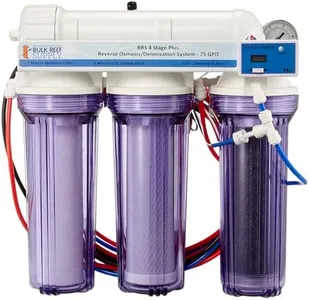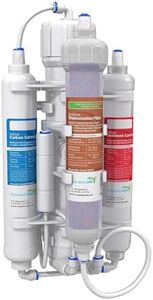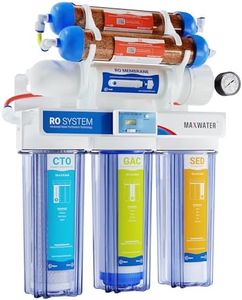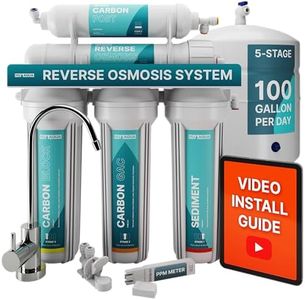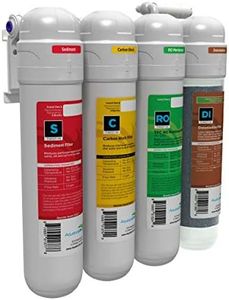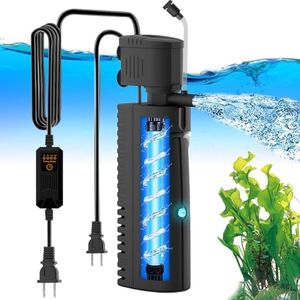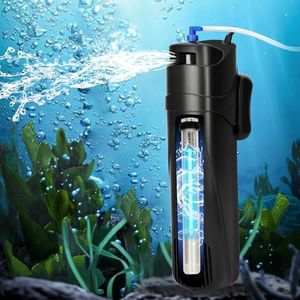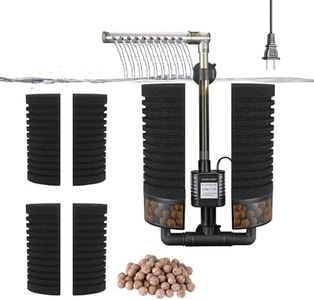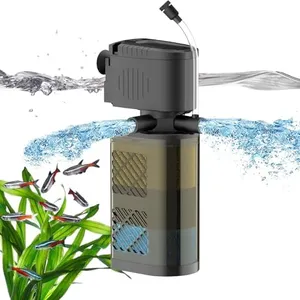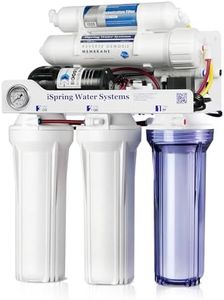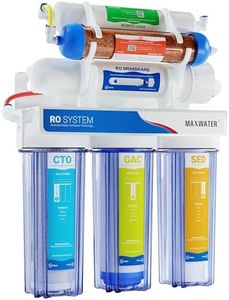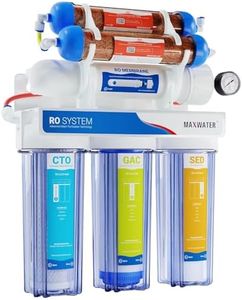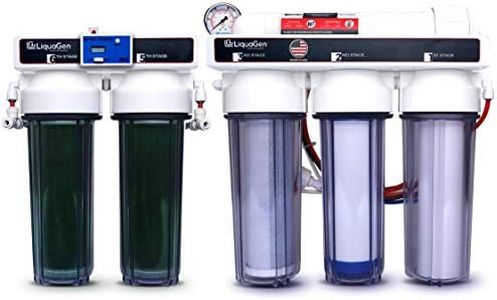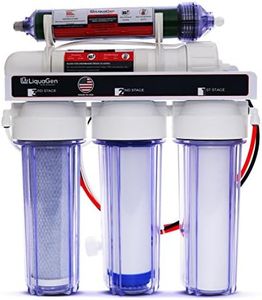10 Best Ro Di System For Reef Tank 2025 in the United States
Our technology thoroughly searches through the online shopping world, reviewing hundreds of sites. We then process and analyze this information, updating in real-time to bring you the latest top-rated products. This way, you always get the best and most current options available.

Our Top Picks
Winner
Bulk Reef Supply 4 Stage Value Plus 75 GPD RO/DI Reverse Osmosis Deionization System
Most important from
15 reviews
The Bulk Reef Supply 4 Stage Value Plus 75 GPD RO/DI System is an excellent choice for reef tank enthusiasts looking for a reliable water filtration system. This system offers a solid 4-stage filtration process that includes sediment removal, chlorine and VOC reduction, advanced RO filtration, and final DI resin polishing. This ensures thorough purification, removing up to 99% of impurities, which is crucial for maintaining a healthy reef tank environment.
Additionally, the 75 gallons per day (GPD) output is sufficient for most home reef tanks, balancing efficiency with water usage. The built-in Total Dissolved Solids (TDS) meter and pressure gauge are valuable features, providing real-time water quality monitoring and timely filter replacement indicators, which simplify maintenance and ensure optimal performance. The inclusion of installation accessories like a garden hose connection, sink adapter with multiple-sized rings, and a canister wrench further adds to the ease of setup and maintenance.
The smart shut-off and cleaning flush valve also enhance the system's lifespan and efficiency. However, the unit's size and weight (16 x 7 x 15.5 inches; 18.35 pounds) might make it somewhat cumbersome for smaller spaces. Additionally, while the system is built for ease of use, those without any DIY experience might find the installation slightly challenging. Despite these minor drawbacks, its comprehensive filtration, user-friendly features, and effective performance make it a strong contender for anyone serious about maintaining a reef tank.
Most important from
15 reviews
Aquatic Life RO Buddie 4-Stage Reverse Osmosis Deionization Water Filter System RO/DI Filtration Units for Aquarium, 50 GPD
Most important from
6214 reviews
The Aquatic Life RO Buddie 4-Stage RO/DI Water Filter System is a solid option for aquarium enthusiasts looking to maintain high water quality for their reef tanks. With a capacity of 50 gallons per day, it effectively meets the needs of hobbyists who require consistent and clean water. Its 4-stage filtration process includes a sediment filter, a carbon block filter, a reverse osmosis membrane, and a color-changing deionization filter, ensuring a thorough removal of impurities and a low Total Dissolved Solids (TDS) level, which is crucial for the health of aquatic life.
One of its standout features is the effective sediment removal, which captures sand and silt, enhancing water clarity. The carbon block filter also efficiently eliminates chlorine, preparing the water for the RO membrane. The color-changing DI resin provides a visual indication of when it’s time for replacement, helping users maintain optimal performance with ease.
There are a few drawbacks to consider. The system may require specific water pressure levels for optimal performance, which could be a concern for some users, depending on their water source. While the maintenance is manageable, users should be aware it may require regular upkeep to ensure continued effectiveness, especially the replacement of filters over time. The system's compact size makes it suitable for limited spaces, yet it might not be suitable for larger setups or those requiring higher gallons per day.
Most important from
6214 reviews
Max Water 6 Stage Aquarium System/RO Water Filtration System with Deionization Filter RO Water Purifier 100 GPD Hydroponics RODI System (Clear Housing System with TDS Meter)
Most important from
13 reviews
The Max Water 6 Stage Aquarium System shines with its effective filtration capabilities, making it an excellent choice for those wanting to maintain a healthy reef tank. With a 6-stage process, it can filter impurities down to 1/10,000 of a micron, ensuring that 99.99% of contaminants such as lead, fluoride, and harmful microorganisms are removed. This level of purification is crucial for keeping sensitive aquatic life safe and thriving.
Its 100 gallons per day (GPD) capacity is also a strong feature, catering well to average aquarium sizes and allowing for frequent water changes without the need to wait long for fresh, purified water. The inclusion of a deionization stage means you can achieve 0 TDS, which is essential for preventing unwanted minerals in your reef system.
Installation and maintenance are straightforward, thanks to color-coded quick connects and labeled filter housings that simplify the process. This user-friendly design is ideal for beginners and seasoned aquarists alike, making it less daunting to keep your system running smoothly. The Max Water 6 Stage RO-DI system is an excellent investment for anyone serious about maintaining a reef tank, balancing effective purification with ease of use; however, it may require some space and ongoing maintenance consideration.


